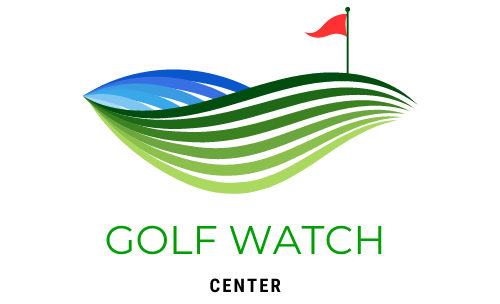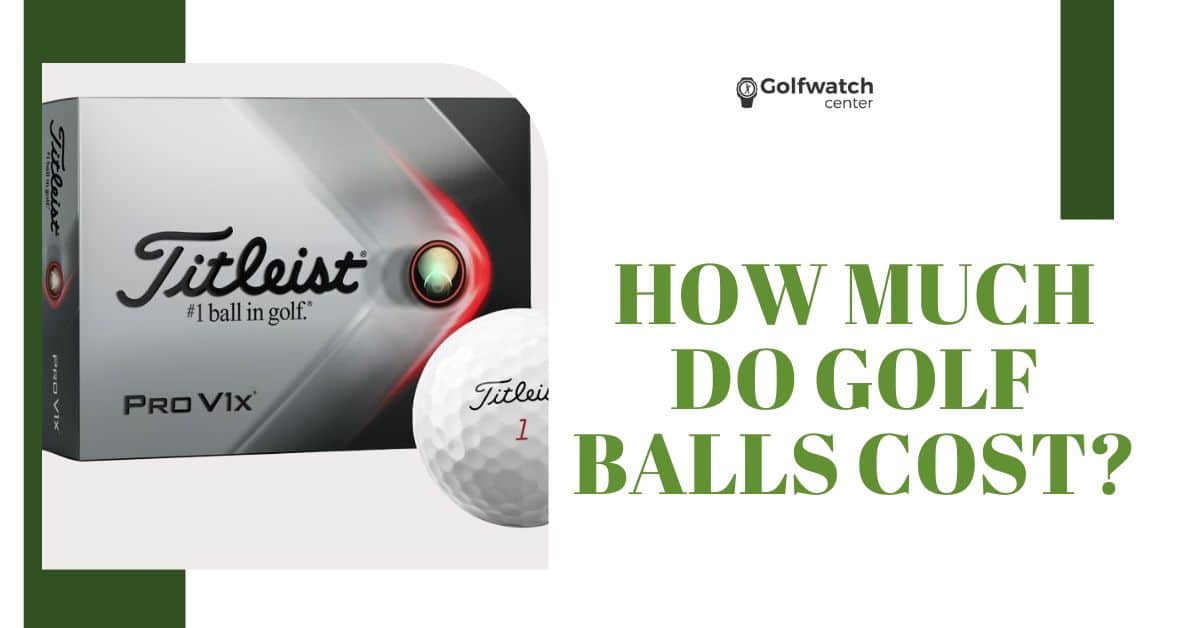Most people enjoy playing golf regardless of age or degree of talent. One of the essential items needed to play golf is a golf ball. Golf balls come in various types and brands, and the cost can vary significantly depending on the quality and design. If you’re a beginner, you may wonder, “How much do golf balls cost?” The answer is not straightforward, as golf balls can range from a few dollars to more than $50 per dozen. In this article, we’ll explore the different factors that influence the cost of golf balls, so you can decide which is best for your budget and playing style.
How much do golf balls cost?
Golf balls are essential to play the game, but the price varies greatly from brand to brand and kind to type. There are three tiers of golf balls based on their quality and performance: low-end distance, mid-range multi-purpose, and premium performance.
Low-end distance balls are the cheapest because they are made to travel far without any attention to precision or control. The going rate for a dozen of these balls is somewhere between $10 and $20.
Golfers who don’t want to break the bank but still want decent performance can find what they’re looking for in mid-range multi-purpose balls, which provide a nice balance of distance, accuracy, and feel. The price per dozen of these balls ranges from $20 to $35.
Professional golfers, who place a high premium on distance, accuracy, and feel, should play with premium performance balls. They are designed to provide the best possible performance, thus they have high-tech features like low-compression cores, several layers, and plush covers. A dozen of these balls can set you back $35-$50.
Used or recycled golf balls, which have been previously used but have been cleaned and restored to a playable state, are also available for purchase in addition to the aforementioned types. The price of used balls can range from $5 to $15 per dozen, which is a big savings over purchasing brand-new balls. Prices for golf balls could go up or down depending on supply, demand, or other elements. As a result, before making any kind of purchase, it is wise to look into the costs of similar items and read reviews written by previous customers.
Golf Ball Price Chart With model and brand
| Brand | Model | Price per ball (approximate) |
| Titleist | Pro V1 | $3-$5 |
| Titleist | Pro V1x | $3-$5 |
| Titleist | AVX | $3-$4 |
| Titleist | Tour Soft | $2-$3 |
| Titleist | Velocity | $1-$2 |
| Callaway | Chrome Soft | $3-$4 |
| Callaway | Chrome Soft X | $3-$4 |
| Callaway | Supersoft | $1-$2 |
| TaylorMade | TP5 | $3-$4 |
| TaylorMade | TP5x | $3-$4 |
| TaylorMade | Project (a) | $2-$3 |
| Srixon | Z-Star | $3-$4 |
| Srixon | Q-Star Tour | $2-$3 |
| Bridgestone | Tour B X | $3-$4 |
| Bridgestone | Tour B RX | $3-$4 |
| Bridgestone | E6 Soft | $1-$2 |
Different types of Golf Balls
Golf balls come in a wide variety, with each model optimized for a certain set of playing conditions. Among the wide varieties of golf balls available, some of the most popular are as follows:
Distance Balls:
The purpose of these golf balls was to maximize the distance of a player’s drive from the tee. The ball can travel further because of the tougher cover and core, which increase speed and decrease spin.
Spin Control Balls:
These balls are made to give players more command over the spin and trajectory of the ball, which in turn improves shot precision and reliability. The softer cover and core of these balls provide for greater spin and control on the greens.
Low Compression Balls:
These balls are designed to compress more easily upon impact, which helps golfers with slower swing speeds achieve greater distance.
Multi-Layer Balls:
These multi-layered balls, with their unique characteristics, can help golfers strike a happy medium between distance, accuracy, and feel. Around the greens, the softer outer layer allows for more control, while the harder interior layers increase distance and ball speed.
Personalized Balls:
These balls are great as a personalized present or as a promotional item because of how they can be altered to include a name, initials, or other information.
Practice Balls:
These balls are typically cheaper and designed for use during practice or at the driving range. They may not have the same performance characteristics as standard golf balls, but they can be a good option for golfers looking to save money on practice balls.
According on your skill level, swing speed, and desired performance qualities, you should select the appropriate type of golf ball for your game. Choosing the perfect ball for your game can have a big impact, so it’s important to think about your options and give them some thought.
What are the benefits of using different types of golf balls?
Depending on your preferred playing style, current skill level, and the course circumstances, there are a variety of advantages to using a specific golf ball. Using a variety of golf balls has many advantages, some of which are listed here:
- Distance Balls: If you have a slower swing speed, distance balls can help you achieve greater distance off the tee. They are designed to provide maximum ball speed and reduced spin, which can help golfers hit the ball farther. Distance balls can benefit golfers who struggle with generating enough distance but may sacrifice some control and accuracy.
- Spin Control Balls: If you want to hit your targets with more precision and consistency, spin control balls are your best option. Golfers can improve the precision of their approach shots and putts because to the additional spin and control provided by these clubs. Golfers who value precision over distance may benefit from using spin-control balls.
- low compression balls: Low compression balls allow golfers with slower swing speeds or who prefer a softer feel to gain distance without compromising feel or control. As a result of their greater compressibility upon contact, golfers with slower swing speeds can increase their distance and ball speed. Golfers who want a softer feel or who have trouble getting enough distance can benefit from using low-compression balls.
- Multi-Layer Balls: Multi-layer balls can improve performance in all three categories (distance, accuracy, and feel). Golfers may increase their drive, spin, and control thanks to their multilayered construction. Golfers who desire a ball that can perform well in a variety of conditions may find multi-layer balls to be a good option.
- Personalized Balls: Using a personalized ball can help you keep track of your ball on the course and add a unique touch to your game. They can also make fun and personalized gift for other golfers.
- Practice Balls: If you’re looking to save money on golf balls or want to practice without worrying about losing expensive Golf balls, practice balls can be a good option. They are typically cheaper and designed for use during practice or at the driving range. They may not have the same performance characteristics as standard golf balls, but they can still provide a good practice experience.
When it comes to golf, everyone has their own preferences and needs. Thus it’s up to the golfer to choose the ideal golf ball for their game.
How to hit a golf ball straight every time
The greatest golfers still need assistance in learning to hit the ball in the same direction every time. No matter how hard you try, not every shot will go straight. However, there are strategies to increase your accuracy. For some ideas, consider the following:
- Proper grip: Having a firm grip on the club can help you make solid contact with the ball.
- Correct stance: Your stance should be shoulder-width apart, and your feet should be parallel to your target line.
- Keep your head still: Maintain a steady focus on the ball while swinging. With this, you can keep your swing path consistent and hit more straight drives.
- Practice your swing: Take some time to work on your swing at the driving range. Take slow, deliberate swings and focus on making good contact with the ball.
- Focus on the target: Aim your attention toward the ball while swinging. This will help you maintain your swing path and hit the ball in the direction you want it to go.
- Use the right club: Choose the right club for the shot you want to make. Using the wrong club can cause you to mishit the ball and miss your target.
Remember, hitting the ball straight every time takes work.
FAQs
Conclusion
High-end golf balls from top brands such as Titleist, Callaway, and TaylorMade can cost between $1 to $5 and more per ball, while less expensive options can cost less than a dollar per ball. The cost of golf balls can add up over time, especially for frequent golfers, and it’s important to find a balance between cost and performance when choosing golf balls.
- Cut Golf Balls Review: Expert’s Verdict - December 10, 2023
- Do Golf Balls Actually Go Worn Out? - October 12, 2023
- What Do The Numbers on Golf Balls Mean? A Look From an In-Depth Perspective - March 10, 2023

